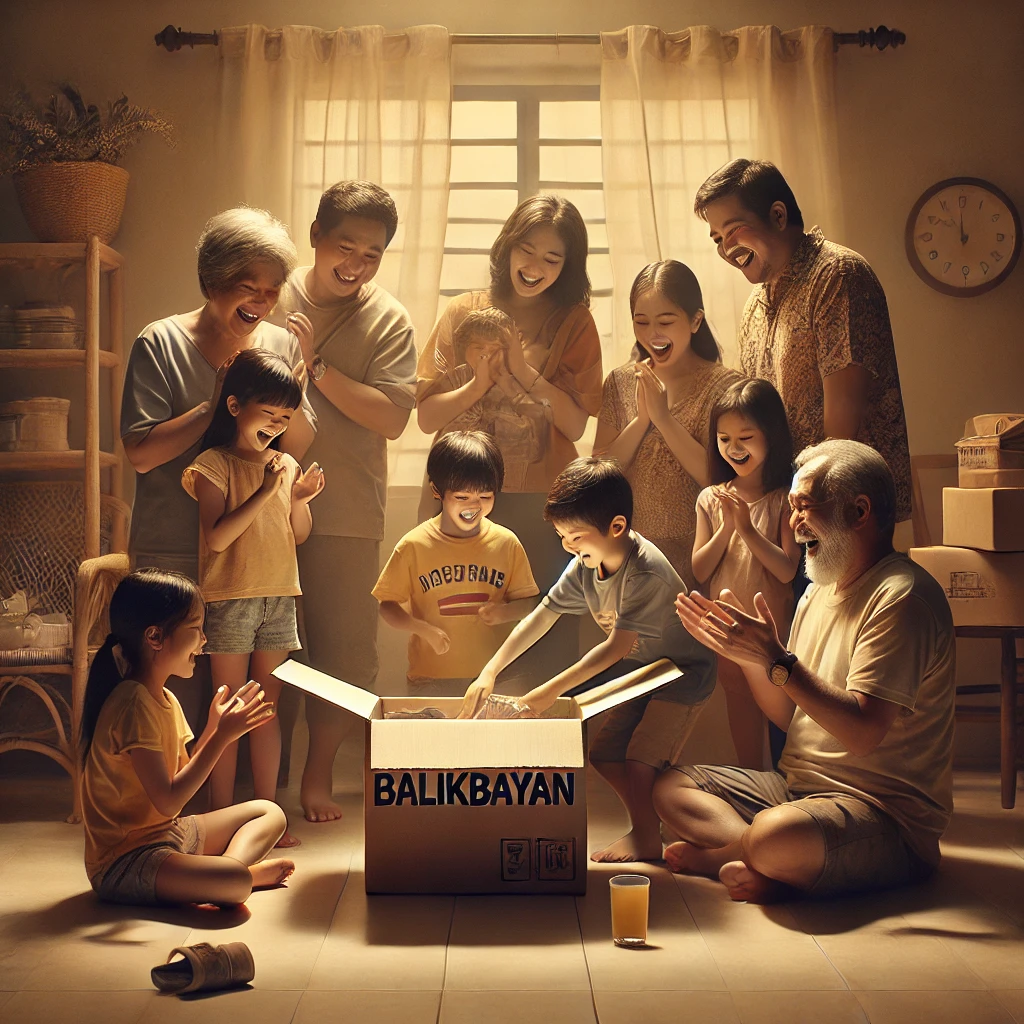The balikbayan box is more than just a cardboard container filled with goods; it is a symbol of love, sacrifice, and connection for millions of Overseas Filipino Workers (OFWs) and their families. This unique cultural phenomenon has become an integral part of Filipino diaspora life, bridging the gap between those who leave their homeland in search of better opportunities and the loved ones they leave behind. In this comprehensive exploration, we delve into the history, significance, and impact of balikbayan boxes on Filipino culture, economy, and family dynamics.
The Origins of Balikbayan Boxes
Historical context
The concept of balikbayan boxes emerged in the 1970s during the presidency of Ferdinand Marcos. The term “balikbayan” itself is a combination of two Tagalog words: “balik” meaning “to return” and “bayan” meaning “country” or “homeland.” The Marcos administration introduced the Balikbayan Program in 1973 as part of an effort to encourage Filipinos living abroad to visit their homeland and contribute to the country’s tourism industry.
Evolution of the practice
Initially, the program allowed returning Filipinos to bring home consumer goods duty-free. This policy laid the groundwork for what would eventually become the balikbayan box tradition. As more Filipinos sought employment overseas in the 1980s and 1990s, the practice of sending large boxes filled with gifts and necessities back home gained popularity. The boxes became a way for OFWs to maintain connections with their families and contribute to their well-being, even from afar.
Legal framework
The Philippine government has recognized the importance of balikbayan boxes and has implemented policies to facilitate their shipment. In 1987, Republic Act No. 6768, also known as the “Balikbayan Program Law,” was enacted to provide incentives for returning Filipinos, including tax-free privileges for balikbayan boxes. This law has undergone several amendments to adapt to changing circumstances and ensure that the program continues to benefit OFWs and their families.
The Anatomy of a Balikbayan Box
Physical characteristics
Balikbayan boxes are typically large, corrugated cardboard boxes designed to withstand long-distance shipping. They come in various sizes, but the most common dimensions are:
| Size | Length (inches) | Width (inches) | Height (inches) |
|---|---|---|---|
| Small | 18 | 16 | 18 |
| Medium | 20 | 20 | 20 |
| Large | 24 | 18 | 24 |
| Extra Large | 26 | 20 | 24 |
These boxes are often reinforced with additional cardboard, tape, and sometimes plastic wrapping to ensure their contents arrive intact after the long journey.
Common contents
The contents of a balikbayan box reflect the thoughtfulness and care of the sender. While each box is unique, some common items typically found include:
- Non-perishable food items (e.g., chocolates, canned goods, coffee)
- Clothing and shoes
- Personal care products
- Household items (e.g., bed sheets, towels, kitchenware)
- Electronics and gadgets
- School supplies
- Toys and gifts for children
- Over-the-counter medicines
The selection of items often reflects the needs and preferences of the recipients, as well as the availability and cost of these goods in the Philippines compared to the sender’s country of residence.
The Economic Impact of Balikbayan Boxes
Contribution to the Philippine economy
Balikbayan boxes represent a significant economic force for the Philippines. According to data from the Philippine Statistics Authority, the value of personal remittances from OFWs reached USD 31.1 billion in 2016, accounting for approximately 10% of the country’s GDP. While not all of this amount is in the form of balikbayan boxes, the practice contributes substantially to the inflow of goods and capital into the country.
Job creation and business opportunities
The balikbayan box industry has created numerous job opportunities and business ventures both in the Philippines and in countries with large Filipino populations. These include:
- Freight forwarding companies specializing in balikbayan box shipments
- Packaging and logistics services
- Customs brokerage firms
- Retail businesses catering to OFWs’ shopping needs for balikbayan box contents
A study by the Asian Development Bank in 2015 estimated that the balikbayan box industry directly employed over 20,000 people in the Philippines and indirectly supported many more jobs in related sectors.
Impact on local markets
The influx of goods through balikbayan boxes has had a complex effect on local markets in the Philippines. While it provides access to foreign products that might otherwise be unavailable or expensive, it can also compete with local industries. This has led to ongoing debates about the economic benefits and challenges posed by the balikbayan box phenomenon.
The Social and Cultural Significance of Balikbayan Boxes
Maintaining family ties
For many OFWs, balikbayan boxes serve as a tangible expression of their love and care for family members left behind. The boxes help maintain emotional connections across vast distances, allowing parents to provide for their children, siblings to support one another, and extended family members to stay connected. The contents of these boxes often reflect intimate knowledge of recipients’ needs and preferences, reinforcing familial bonds despite physical separation.
Cultural exchange and identity
Balikbayan boxes also facilitate cultural exchange between the Philippines and the countries where OFWs reside. The items sent often include products that are popular or unique to the host country, introducing new tastes, trends, and ideas to Filipino families. This exchange contributes to the evolving nature of Filipino cultural identity in an increasingly globalized world.
Social status and expectations
The practice of sending balikbayan boxes has become so ingrained in Filipino culture that it has created certain social expectations. OFWs may feel pressure to send boxes regularly and fill them with valuable or desirable items as a demonstration of their success abroad. Recipients, in turn, may come to rely on these boxes as a source of material goods and a measure of their overseas relatives’ affection and financial stability.
Challenges and Controversies Surrounding Balikbayan Boxes
Customs and taxation issues
Despite legal protections, balikbayan boxes have occasionally been subject to controversies related to customs inspections and taxation. In 2015, a proposal by the Bureau of Customs to conduct random inspections of balikbayan boxes sparked public outrage and prompted intervention from then-President Benigno Aquino III. The incident highlighted the emotional and political sensitivity surrounding these boxes and led to policy clarifications to protect OFWs’ rights.
Shipping and logistics concerns
The transportation of balikbayan boxes presents various logistical challenges. Issues such as delayed shipments, damaged goods, and lost boxes are not uncommon. These problems can cause significant distress for both senders and recipients, given the emotional and financial investment involved in each box.
Environmental impact
The environmental implications of balikbayan boxes have become a growing concern. The use of large cardboard boxes, often wrapped in additional plastic, contributes to waste generation. Some environmentalists and policymakers have called for more sustainable packaging solutions and improved recycling practices in the balikbayan box industry.
The Future of Balikbayan Boxes in a Digital Age
Technological innovations
As technology advances, the balikbayan box industry is adapting to new realities. Online platforms now allow OFWs to order items directly from Philippine retailers for delivery to their families, potentially reducing the need for physical box shipments. Some companies are experimenting with digital tracking systems to provide real-time updates on box locations and estimated delivery dates.
Changing patterns of migration and communication
The future of balikbayan boxes may be influenced by evolving patterns of Filipino migration and improvements in global communication technologies. As more Filipinos find opportunities for permanent settlement abroad or engage in circular migration, the nature and frequency of balikbayan box shipments may change. Additionally, the increasing accessibility of video calls and social media may alter the way OFWs maintain connections with their families, potentially impacting the role of physical gift-giving.
Policy considerations
Policymakers in the Philippines continue to grapple with how best to support and regulate the balikbayan box phenomenon. Future policies may need to balance the benefits of this practice with concerns about tax revenue, local industry protection, and environmental sustainability.
Conclusion
Balikbayan boxes remain a powerful symbol of the Filipino diaspora experience, embodying the complex emotions, economic realities, and cultural practices of millions of OFWs and their families. These humble cardboard containers carry within them not just material goods, but also dreams, sacrifices, and the enduring bonds of family and national identity. As the Philippines continues to navigate its place in the global economy and Filipinos forge lives across borders, the balikbayan box stands as a testament to their resilience, generosity, and unwavering connection to home.
While the future may bring changes to this practice, the spirit of “balikbayan” – of returning, giving back, and staying connected – is likely to remain an integral part of Filipino culture for generations to come. As we look to the future, it is clear that the story of the balikbayan box is far from over; it continues to evolve, reflecting the dynamic nature of Filipino society and its diaspora in an ever-changing world.
Disclaimer: This article contains information accurate up to 2017. While every effort has been made to ensure the accuracy of the data and information presented, readers are encouraged to verify current statistics and regulations as they may have changed since the time of writing. Please report any inaccuracies so we can correct them promptly.




